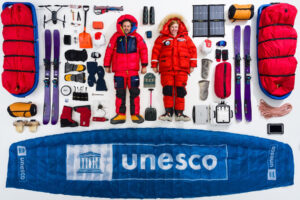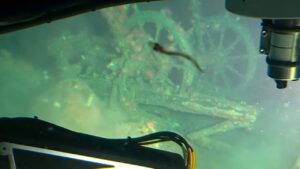Ski-equipped R4D-5 (a Navy version of the DC-3)
(douglasdc3.com) On Oct. 31, 1956, Lt. Cdr. Gus Shinn landed the first plane at the South Pole. It was a ski-equipped R4D-5 (a Navy version of the DC-3) named “Que Sera Sera.” With temperatures hovering near minus 60 F, Shinn kept the engines running while Adm. George Dufek stepped out of the plane and became the first person to stand at the Pole since Robert Scott’s party, more than four decades earlier.
For every milestone like this there are people behind the scenes who play a large part, too. Pilots Eddie Frankiewicz and Jim Waldron were the rescue crew who waited in the wings that day, and they too relied upon the same model.
They landed their R4D “Charlene” on the Liv Glacier as Shinn and Dufek flew overhead. “Charlene’s” engines were kept running for the better part of a day, to be ready at a moment’s notice in case the historic flight to Pole needed help.
Waldron remembers the aircraft fondly.
“It was a very reliable airplane. We put it through a lot of terrible weather and cold but it was always stable and had very few failures. It was terrific for what it could do,” he said.
“It was a magnificent airplane,” Frankiewicz said. “It could carry a great load of ice on its wings. And with a great big barn door for a rudder it made for easy cross-wind landings,” he said.
Another pilot, E.D. “Buz” Dryfoose, explained the reasons it’s as good as a mid-weight aircraft in Antarctica.
“For open snow landings at the reduced weight of the R4Ds, they could land where there were possible snow bridges over crevasses that could not be seen,” Dryfoose said. “The 130s would not fare as well under those circumstances with 100,000 pounds more weight.”
‘The R4D proved its worth time and again. On the other side of the Ross Ice Shelf at an encampment called Little America the planes would be left to winter on their own. Upon returning, the aircrew would dig the machines out of the snow, fire them up and fly away.
This article originally appeared on https://www.douglasdc3.com/





